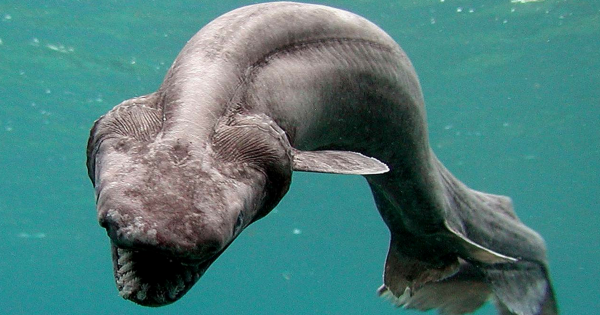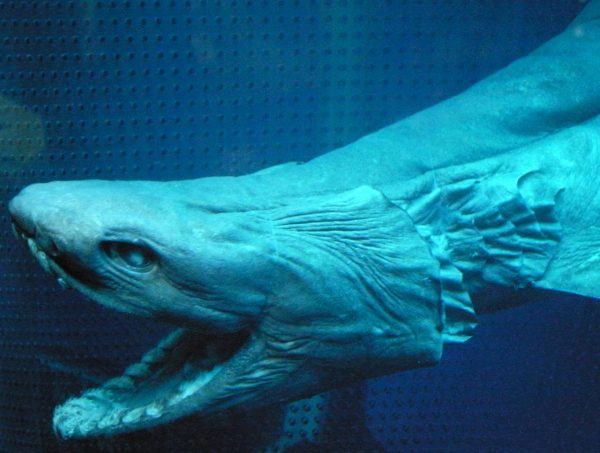
A prehistoric shark was spotted off the coast of Portugal, baffling scientists around the world. The shark, which has since been identified as a frilled shark, has existed since the Cretaceous Period. This means these sharks were swimming in waters at the same time Tyrannosaurus Rex and other dinosaurs were roaming the Earth.
While dinosaurs went extinct, the frilled shark continues swimming in the ocean to this day. Researchers discovered this frilled shark in Portuguese waters while working on a project to “minimize unwanted catches in commercial fishing.”
The shark’s formal name is Chlamydoselachus anguineus. The deep sea dweller is simple and has not evolved as much as other sharks. Scientists believe this is because of the lack of nutrients and advanced diets found in the deep waters where the frilled shark typically lives.
A Japanese study of the frilled shark discovered its diet consisted of 61 percent cephalopods, squids, and octopus-like fish, as those are the type of creatures that typically exist in deep waters. This prehistoric creature usually dwells in waters between 390 and 4,200 feet below the surface of the water. Scientists rarely see this shark in person and it wasn’t even discovered by humans until the 19th century.
The frilled shark derives its name from its gills. While most sharks have separate gills, the frilled shark’s first pair of gills is across its throat. It has six gills in total and they are described as being “frilly.”

It has 300 teeth lined up in 25 rows. Its mouth is designed this way to trap squid, fish, and even other sharks in sudden lunges.
A video about frilled sharks can be seen below.
The frilled shark is considered to be a “living fossil” because they have existed for 80 million years. While many other creatures went extinct or evolved over time, this type of shark remained the same for centuries.
Another video of this unique shark can be seen below:
After Hurricane Harvey, a scientist found a prehistoric-looking creature washed up on a Texas beach. Click here to see those photos.
Share this story if you were as impressed with this scientific discovery as we were!
Source: Newsweek
More About:Lifestyle
